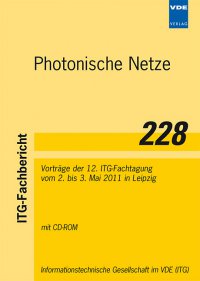100Gbit/s IP-Router and DWDM Transmission Interoperability Field Tests
Konferenz: Photonische Netze - 12. ITG-Fachtagung
02.05.2011 - 03.05.2011 in Leipzig, Germany
Tagungsband: Photonische Netze
Seiten: 3Sprache: EnglischTyp: PDF
Persönliche VDE-Mitglieder erhalten auf diesen Artikel 10% Rabatt
Autoren:
Braun, Ralf-Peter (Deutsche Telekom AG Laboratories, Winterfeldtstrasse 21-27, 10781 Berlin, Germany)
Inhalt:
The ongoing capacity demand in the communication networks led to the development of 100Gbit/s technologies standardized at IEEE 802.3ba for 100GE Ethernet and at ITU-T G.709 for 112 Gb/s optical transport network (OTN) interfaces. Such multi-lane interfaces became recently commercially available as pluggable CFP modules, which are well suited in data centers and central offices for IP routers and switches, and for the client or tributary side of long haul OTN transmission systems. For the line side of long haul 100Gbit/s DWDM transmission systems, the polarization multiplex - quadrature phase shift keying - coherent detection (PM-QPSK-CD) technology was proposed in a multi source agreement of the Optical Internet Forum (OIF). In this paper the 100 Gbit/s interworking between IP routers, long haul DWDM transponders, a field installed DWDM transmission system, and an IP performance tester is discussed and successfully demonstrated by R&D field experiments in the German Deutsche Telekom network, also enabled by the 100GET project. In the tests, IP routers of Alcatel-Lucent, Cisco, and Juniper were interconnected via e.g. 100GBASE-LR4 pluggable CFP transceiver modules to the IXIA IP performance tester, and to the 112 Gbit/s DWDM transponders of Alcatel-Lucent and Huawei. Those 3rd party DWDM transponders used DWDM channels of an already field installed Ericsson DWDM transmission system of 220 km link length between Essen and Muenster. The 100G IP and DWDM interoperability tests were successfully performed together with co propagating 10G NRZ, 10G RZ, and 40G NRZ channels in the DWDM system, enabling migration scenarios towards Tbit/s link capacities. Furthermore, the already installed fiber DWDM infrastructure could be used by 3rd party equipment for management assigned alien wavelength channels, enabling modular network architectures with Plug’ Play functionality, and cost effective networking by combining optic and packet functionalities.


